“Bombers Down!” by Colcord Heurlin
THIS week we have a cover by the great Colcord Heurlin! He provided covers throughout the 1920’s and early 30’s for various pulp magazines—most frequently for your Adventure type magazines. Here we present his cover for the March 1931 issue of Flying Aces—a dynamic cover that once again has a story to tell.
Bombers Down!
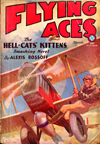 NOT all the danger attending the life of a bombardment pilot was crammed into the few mad minutes he spent over his objective, dodging enemy anti-aircraft fire, intercepting aircraft or the betraying beams of searchlights while his observer pulled the toggles that released the grim eggs. There was the dangerous take-off with a loaded plane. There was the wild flight across the line through the barrage of steel that vomited up from anti-aircraft batteries, and then, above all, there was the flight back.
NOT all the danger attending the life of a bombardment pilot was crammed into the few mad minutes he spent over his objective, dodging enemy anti-aircraft fire, intercepting aircraft or the betraying beams of searchlights while his observer pulled the toggles that released the grim eggs. There was the dangerous take-off with a loaded plane. There was the wild flight across the line through the barrage of steel that vomited up from anti-aircraft batteries, and then, above all, there was the flight back.
To carry high explosive was no cinch at the best of times, and many a pilot lost pounds in weight or added years to his age as he sat in the ship carrying the dangerous missiles. Once over the objective, they could get rid of the stuff and heave a sigh of relief. But—suppose the bomb rack jammed and left the bombs hanging by a lone loop. Suppose the observer yanked and pulled on the toggles in an effort to get it off, anyway and anywhere at all, with no success.
This has happened on several occasions, and generally speaking, the airmen are in a tight position. They cannot land with the bomb hanging in that manner. With the nose portion clear of the rack, as is shown in this month’s illustration, the wind vane has been released and the percussion pin has been wound into concussion position. All it requires is a slight jounce, and the 500-pound shell of T.N.T. is touched off. There is nothing to do but try and get the shell off somehow. Many an observer today is wearing a ribbon on his old flying tunic for getting out and releasing a bomb from a rack that has jammed. Sometimes it is easy. Sometimes the observer has had to get down on the landing gear and actually file the release pin off, or even shoot it away with an automatic.
There were times when it was done successfully. There were many when they were unable to release it before their gas supply ran out.
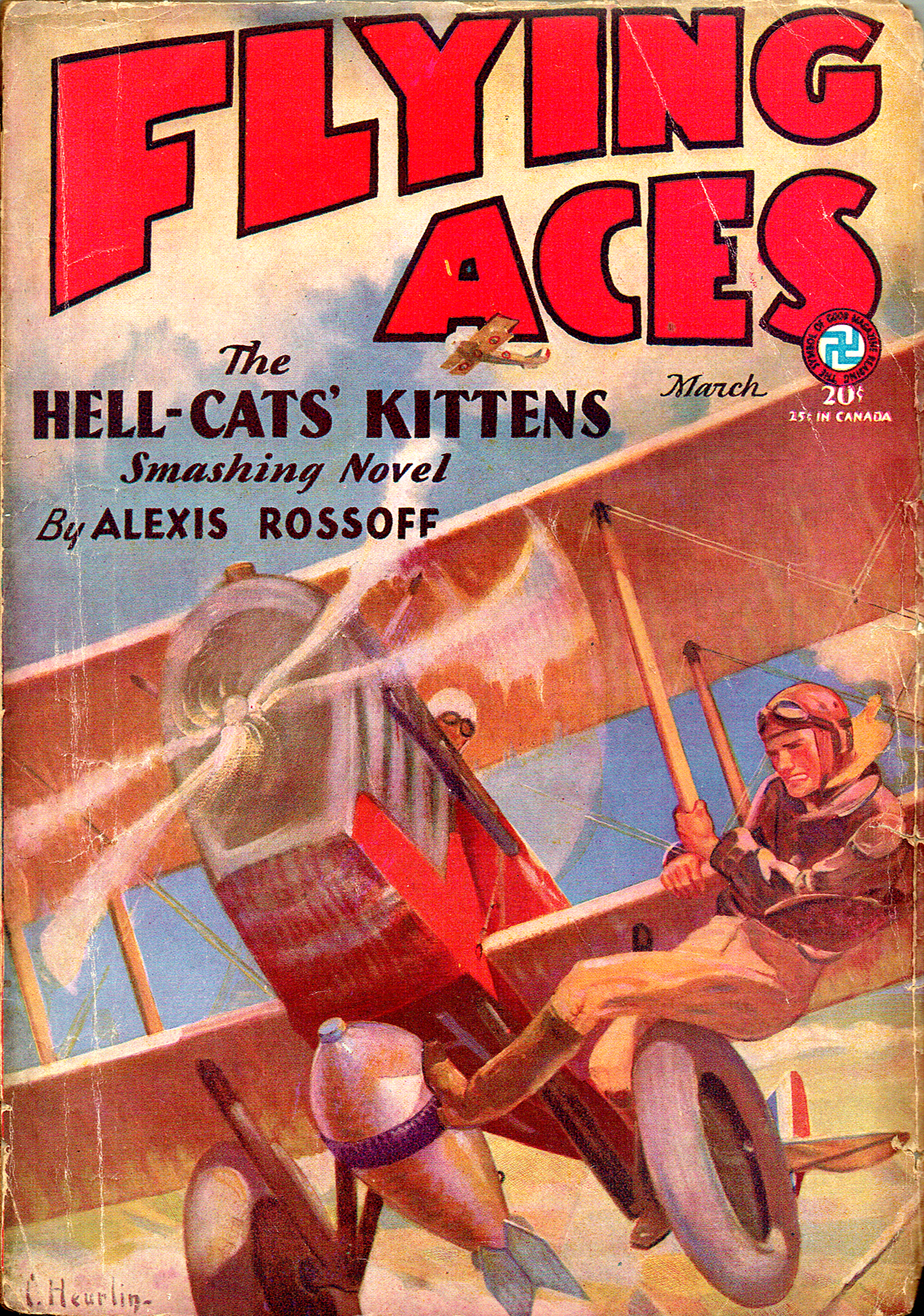
“Bombers Down!â€
Flying Aces, March 1931 by Colcord Heurlin





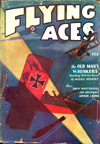
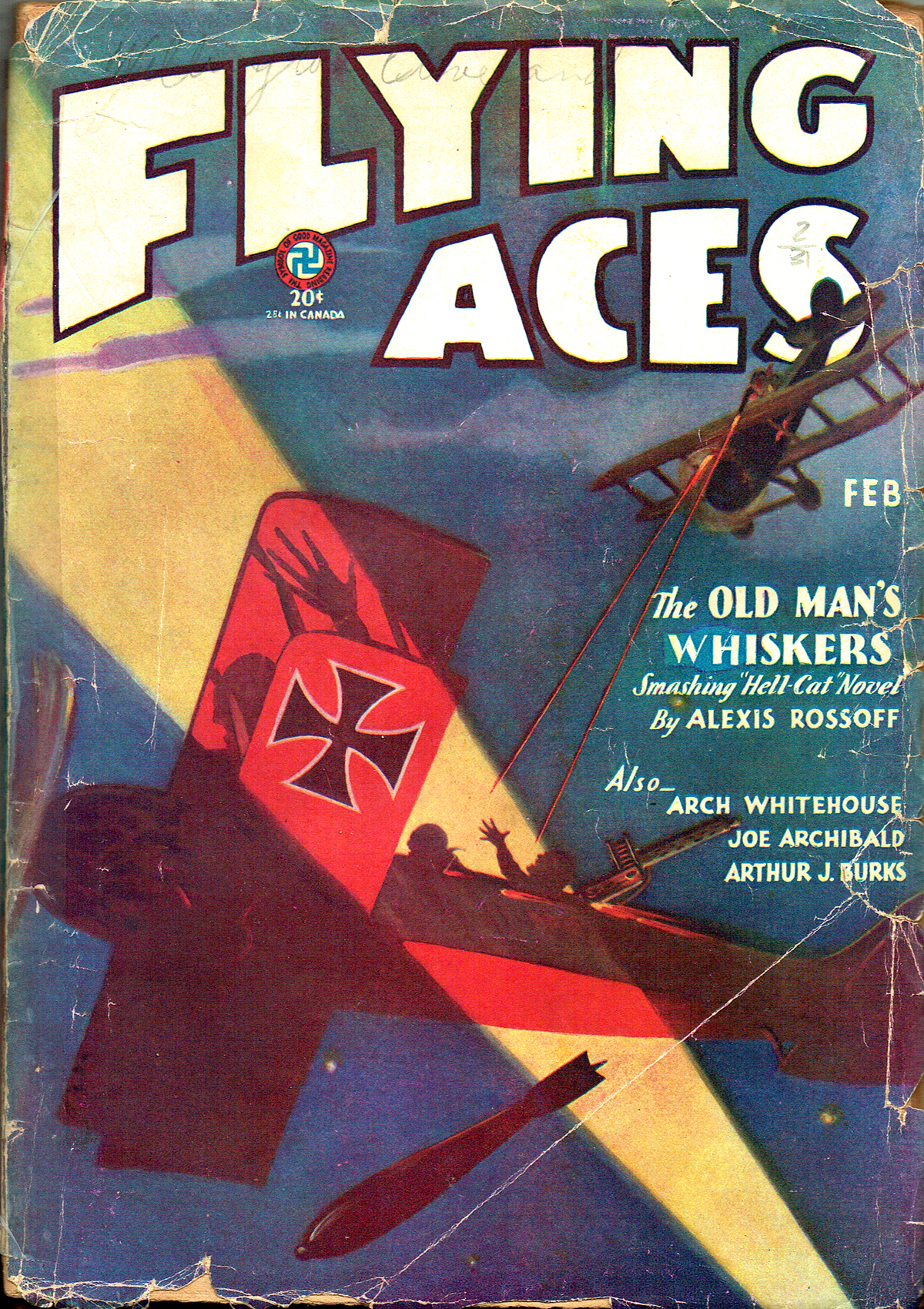
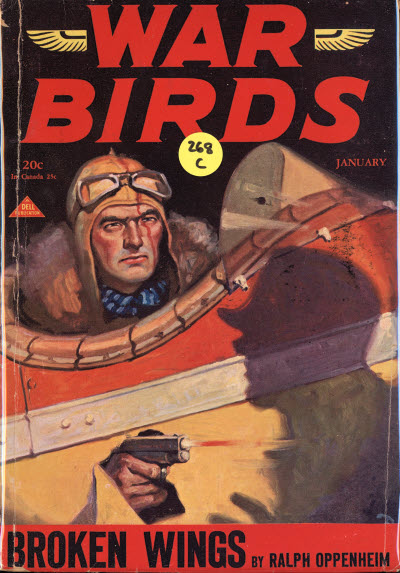 the third of three Three Mosquitoes stories we’re presenting this month. The Three Mosquitoes disband! The darker side of notoriety rears it’s ugly head—is Kirby a “Glory Grabber” taking all the glory and sharing none of the credit—easily picking off the other’s adversaries out from under them? Does he take Shorty Carn and Lanky Travis for granted? Yes, that inseparable threesome have it out and go their own ways! Each sinking the lowest a man can go without the others—and just as the big German offensive is about to kick off! Can the Kirby, Carn and Travis fix their “Broken Wings” or is this it for the intrepid trio? In what is probably their darkest tale, from the pages of the January 1931 issue of War Birds!
the third of three Three Mosquitoes stories we’re presenting this month. The Three Mosquitoes disband! The darker side of notoriety rears it’s ugly head—is Kirby a “Glory Grabber” taking all the glory and sharing none of the credit—easily picking off the other’s adversaries out from under them? Does he take Shorty Carn and Lanky Travis for granted? Yes, that inseparable threesome have it out and go their own ways! Each sinking the lowest a man can go without the others—and just as the big German offensive is about to kick off! Can the Kirby, Carn and Travis fix their “Broken Wings” or is this it for the intrepid trio? In what is probably their darkest tale, from the pages of the January 1931 issue of War Birds!




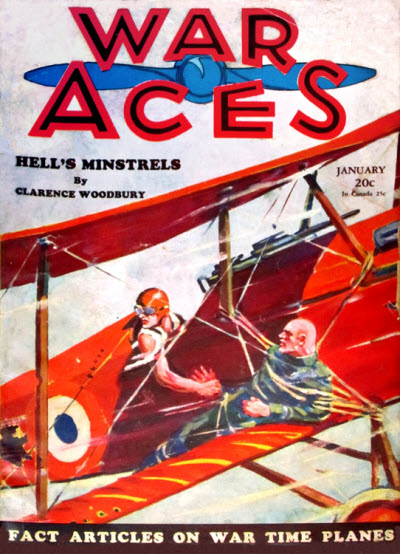 another tale of sausage men—those brave individuals who risked their lives dangling in a basket below a balloon to help the artillery get an accurate range for their guns. And that basket is mighty small when you’re a non-commissioned officer hanging under the bag with Cecil Granville Terence Dwight-DeLacey! Cecil Granville had been hatched on a parade ground. His buttons shone with a holy radiance and he saw no reason why the buttons of the world should not shine with equal luster. Nor did Cecil Granville take kindly to men who slouched or drank or forgot salutes or who assumed comfortable positions. In short, Cecil Granville was the type of officer best calculated to make any branch of the service unattractive to the poor devils he outranked. Jimmy Carr, the noncom in the basket with him, was his entire command and Jimmy got all the grief which would have been heavy if distributed over an entire company. But events transpire that lead Carr to prove that not all Cecil Granville’s beliefs are true!
another tale of sausage men—those brave individuals who risked their lives dangling in a basket below a balloon to help the artillery get an accurate range for their guns. And that basket is mighty small when you’re a non-commissioned officer hanging under the bag with Cecil Granville Terence Dwight-DeLacey! Cecil Granville had been hatched on a parade ground. His buttons shone with a holy radiance and he saw no reason why the buttons of the world should not shine with equal luster. Nor did Cecil Granville take kindly to men who slouched or drank or forgot salutes or who assumed comfortable positions. In short, Cecil Granville was the type of officer best calculated to make any branch of the service unattractive to the poor devils he outranked. Jimmy Carr, the noncom in the basket with him, was his entire command and Jimmy got all the grief which would have been heavy if distributed over an entire company. But events transpire that lead Carr to prove that not all Cecil Granville’s beliefs are true!

 a story from the pen of a prolific pulp author James Perley Hughes! Hughes was a frequent contributor to various genres of pulps, but he seemed to gravitate toward the air-war spy type stories. And this week’s tale is a prime example—two excellent combat pilots, Sandy Patton and his wingman George Bridges, find themselves transferred to the NIght Owls, a bat patrol that ferries spies over the lines, after a drunken boast. They soon find trouble and intrigue on both sides of the lines from their very first mission when they must fly to QX-31 to extract some agents—a location from which few pilots have ever returned! From the August 1931 issue of Sky Birds, it’s James Perley Hughes’ “The Secret of QX-31!”
a story from the pen of a prolific pulp author James Perley Hughes! Hughes was a frequent contributor to various genres of pulps, but he seemed to gravitate toward the air-war spy type stories. And this week’s tale is a prime example—two excellent combat pilots, Sandy Patton and his wingman George Bridges, find themselves transferred to the NIght Owls, a bat patrol that ferries spies over the lines, after a drunken boast. They soon find trouble and intrigue on both sides of the lines from their very first mission when they must fly to QX-31 to extract some agents—a location from which few pilots have ever returned! From the August 1931 issue of Sky Birds, it’s James Perley Hughes’ “The Secret of QX-31!”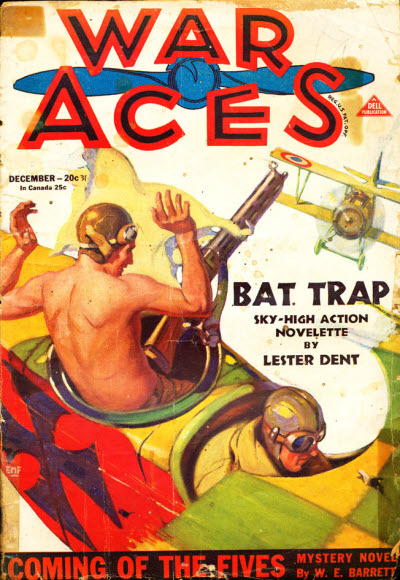 Mosquito Month we have a non-Mosquitoes story from the pen of Ralph Oppenheim. It’s a humerous tale of Lieutenant Sleepy Miller—so named because he could fall asleep anywhere at anytime—even in the middle of a war with bombs going off all around him. From the December 1931 issue of War Aces it’s “Lazy Wings.”
Mosquito Month we have a non-Mosquitoes story from the pen of Ralph Oppenheim. It’s a humerous tale of Lieutenant Sleepy Miller—so named because he could fall asleep anywhere at anytime—even in the middle of a war with bombs going off all around him. From the December 1931 issue of War Aces it’s “Lazy Wings.” remembered as the man behind
remembered as the man behind 

